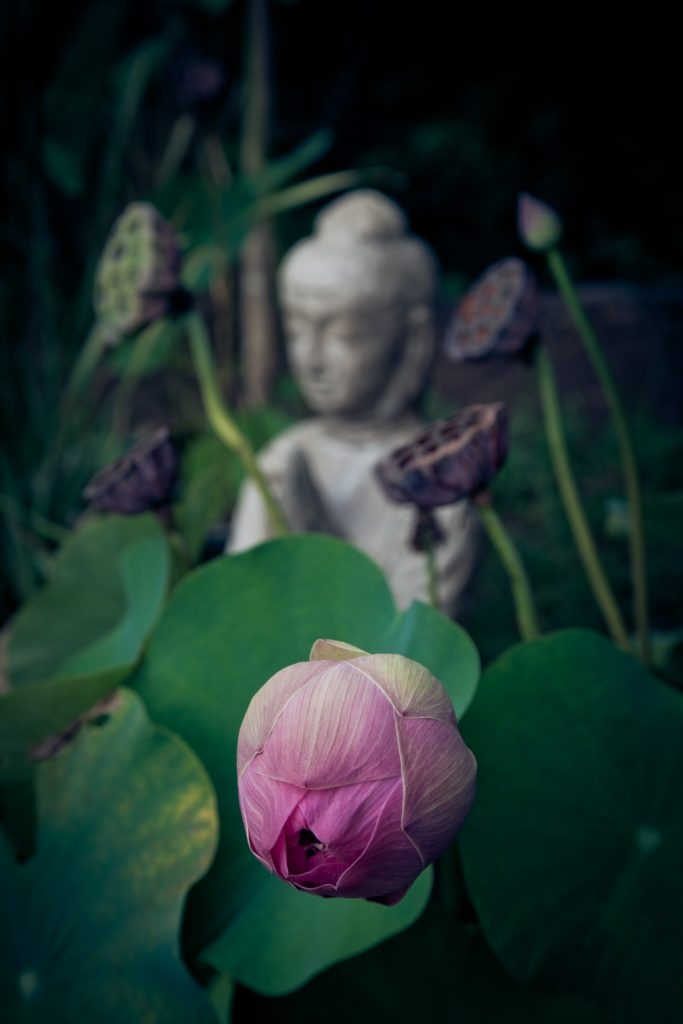It’s a crisp blue-sky fall afternoon and I’m gliding down the Wapiti Trail, a serpentine swatch of singletrack in the foothills below Longs Peak. I’m polishing off the final segment of an hour loop, descending through a glade of Ponderosa Pines to an open meadow. Across the valley I can see the majestic summit of Bear Peak, its flanks of evergreen trees turned a warm sage in the afternoon sunlight.
As I gain speed on this last descent, I hook into that elusive feeling of here-ness. I’m part of everything – the trees and mountains around me, the trail, my body, my mind, the very laws of nature. For this moment, we are all one together.
Now and then we have perfect moments on a run, those little gifts in which we are truly connected and truly present. What those moments have in common is the experience of oneness – or, to put it more philosophically, the revelation of non-dualism.
The Story of Dualism
Dualism is a story about reality: the idea that we are fundamentally separate from the rest of the world. We are separate agents who act upon, or are acted upon, the outside world. Dualism says that our souls are separate from the natural world; that we are separate from each other; and that we are fundamentally separate from God.
Our Western belief system is deeply steeped in duality. The hallmark feature of our dominant theistic system, monotheism, is the idea of a single, separate God with dominion over its human subjects.
Descartes, perhaps the most famous dualist, argued that our bodies are physical parts of the material world, but our minds are totally separate from the physical world. William James imagined a physical realm in which our mortal bodies live, and a separate immortal one where consciousness lives. Even the ways we talk about cause and effect, and about such esoteric philosophical topics as free will and determinism, are steeped in dualism.
Dualism Is An Illusion

But the story, is, alas, an illusion.
In fact, it’s the biggest con ever foisted on the human race.
The perpetrator we have to thank is evolutionary selection pressure. Throughout our history, our brains evolved to serve its true master: our selfish genes. Over time, our genes found the best way to transmit themselves to successive generations was to produce for our consciousness a story of the world.
This story helped us survive. Believing that the material world was something separate from us helped us operate in a hostile world, enabling essential tasks like fleeing predators and finding food. And belief that our little group of humans was fundamentally different – and superior — to others may have succeeded in making our tribes more resilient and stronger (and may have helped deliver victory over the competing Neanderthals).
The demon of duality may help meet our basic survival needs, but it can be immensely damaging as well. It encourages us to believe we are separate from each other, and that we are fundamentally different from other living things. It encourages us to feel separate from nature and the physical world.
When that happens, we care less about the physical world and how it works. We eschew science. We see other humans – and, even more so, other living things – as objects separate from us, and thus less deserving of our empathy and consideration.
On a personal level, the demon of duality causes us detachment and separation, a sense of emptiness and disconnection.
How To Embrace Non-Dualism
Fortunately, we can always break out of our dualistic thinking. We may draw from Eastern belief systems, which have a stronger tradition of non-duality. In various forms of Buddhism, for example, all things are seen as inter-related and mutually dependent, an idea expressed by the concept of sunyata, which simply means “emptiness”.
In the West, we think of emptiness as a void needing filling, which we fill with material objects or with the ongoing babble of our endlessly chattering minds. In Buddhism, emptiness itself is the goal. It refers to a liberation from the clutter that is not truth itself, but impedes us from experiencing truth. It is the understanding that there is no “self” that is not part of the greater whole. When we truly understand anatta, the doctrine of not-self, we will have attained the state of nirvana, a Sanskrit word which roughly means “disappearance” or “extinction” — the extinction of the illusory belief in a self separate from the great Cosmos itself.
In the Hindu school of Advaita Vedanta, there is only one reality, Brahman. The essence of Brahman lives in all of us in the form of atman – literally, “breath”. Nonduality is at the heart of the Indian school of Madhyamika, in which an ultimate nondualistic reality exists beyond the apparent duality of conventional and absolute truth, and it is also underlies the Zen Buddhist concept of rigpa, or nondual awareness. In Tantra – an ancient set of mystical traditions of Hinduism and Buddhism — humans are not meant to transcend the world, but to absorb themselves into it, finding bliss by experiencing the divine within one’s own body.
You already know that running is my favorite mechanism through which to seek the experience nonduality. But there are other mechanisms, too, such as meditation; becoming immersed in a creative pursuit; and psychoactive drugs such as psilocybin. All can produce and enhance the experience of unity.
The idea of the nondual soul is artfully expressed in the parable of Shvetaketu in the ancient Hindu texts the Upanishads. The Vedic sage Uddalaka, in his ongoing quest to try to convey the truth of existence to his arrogant son Shventaketu, tells him to throw salt into a bowl of water and return in the morning. The next day he asks Shvetaketu to retrieve the salt, but of course he cannot find it, as it has dissolved. And yet the water tastes salty.
“You cannot make out what exists in it, yet it is there,” says the teacher. “Likewise, though you cannot hear or perceive or know the subtle essence, it is here. Everything that exists has its Self in that subtle essence. It is Truth. It is the Self, and you, Shvetaketu, you are That.”
Our souls are salt in the great cosmic water bowl. We are unity, we are Brahman, we are all flying down the trail, fundamentally One.












